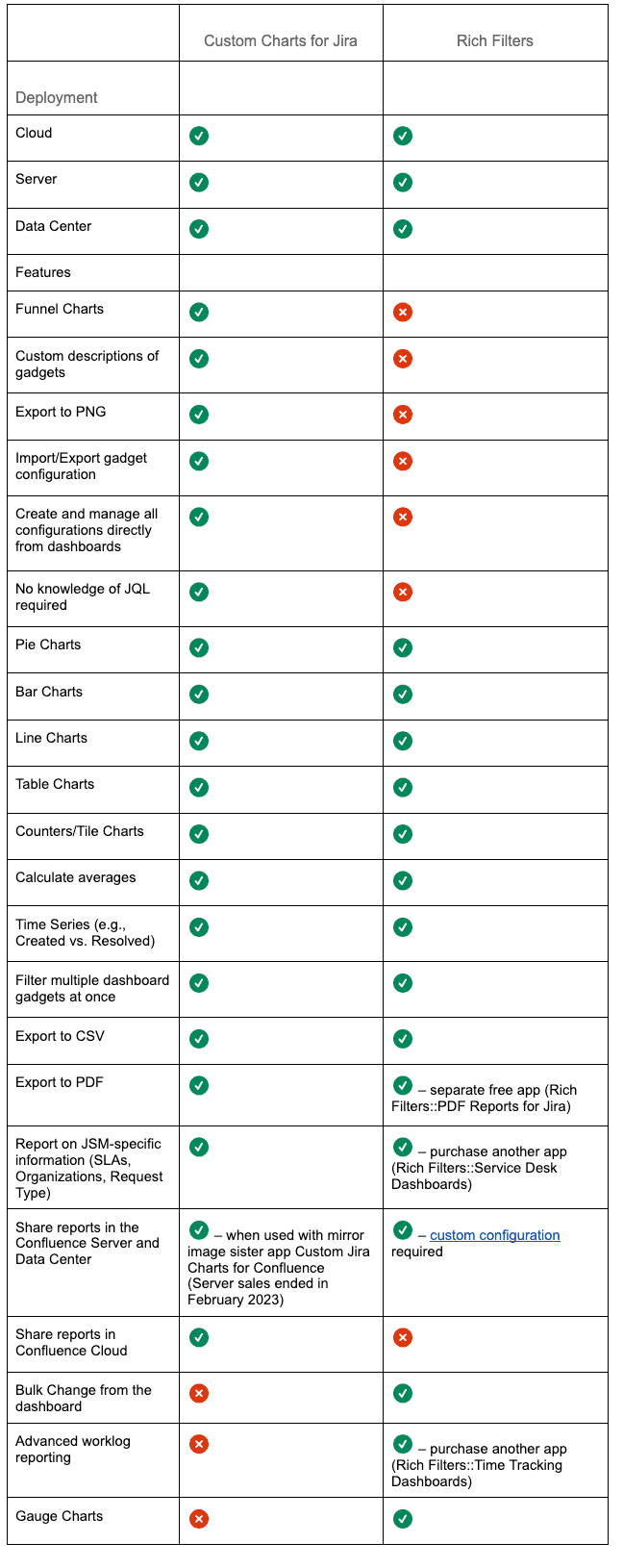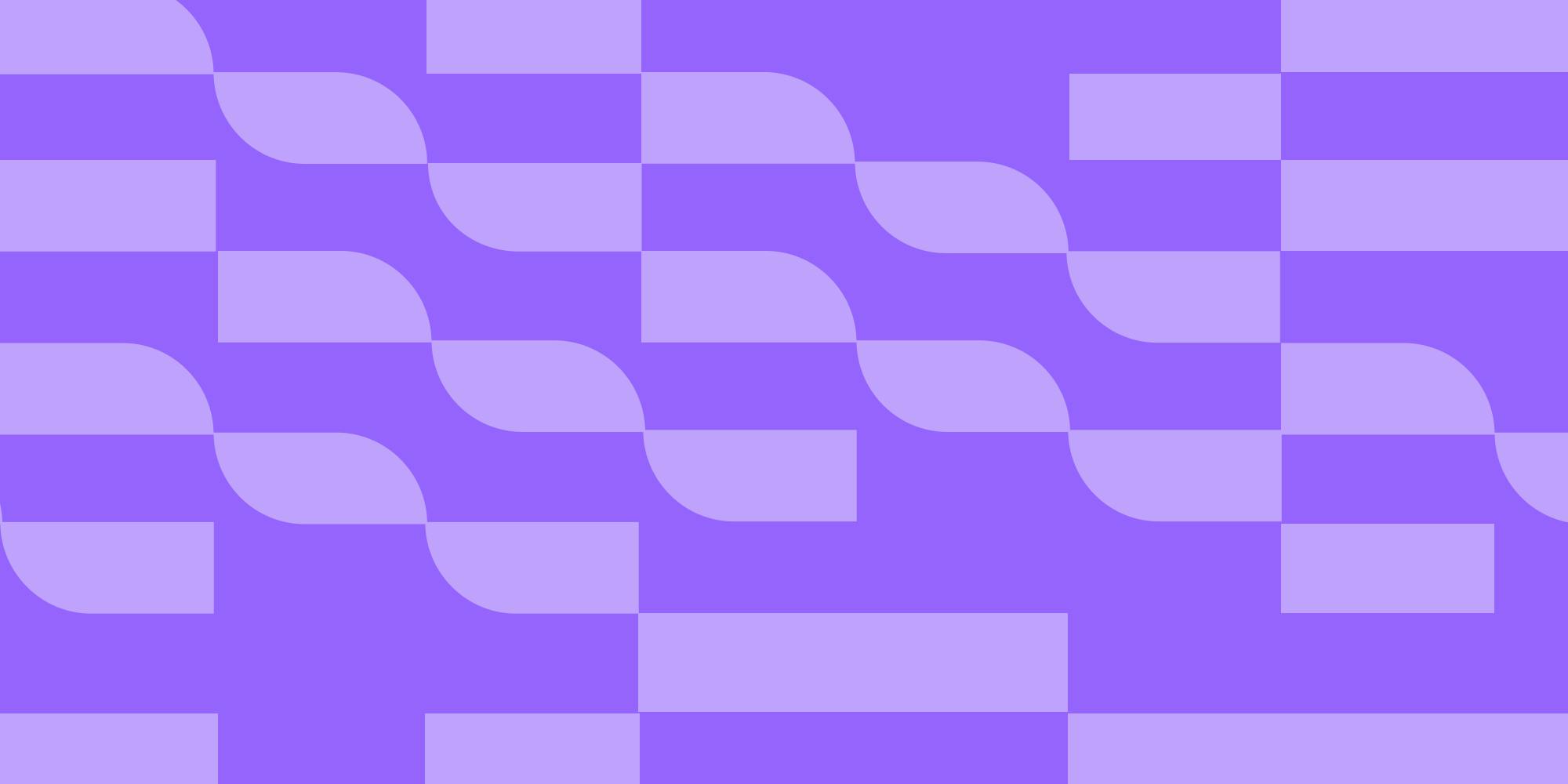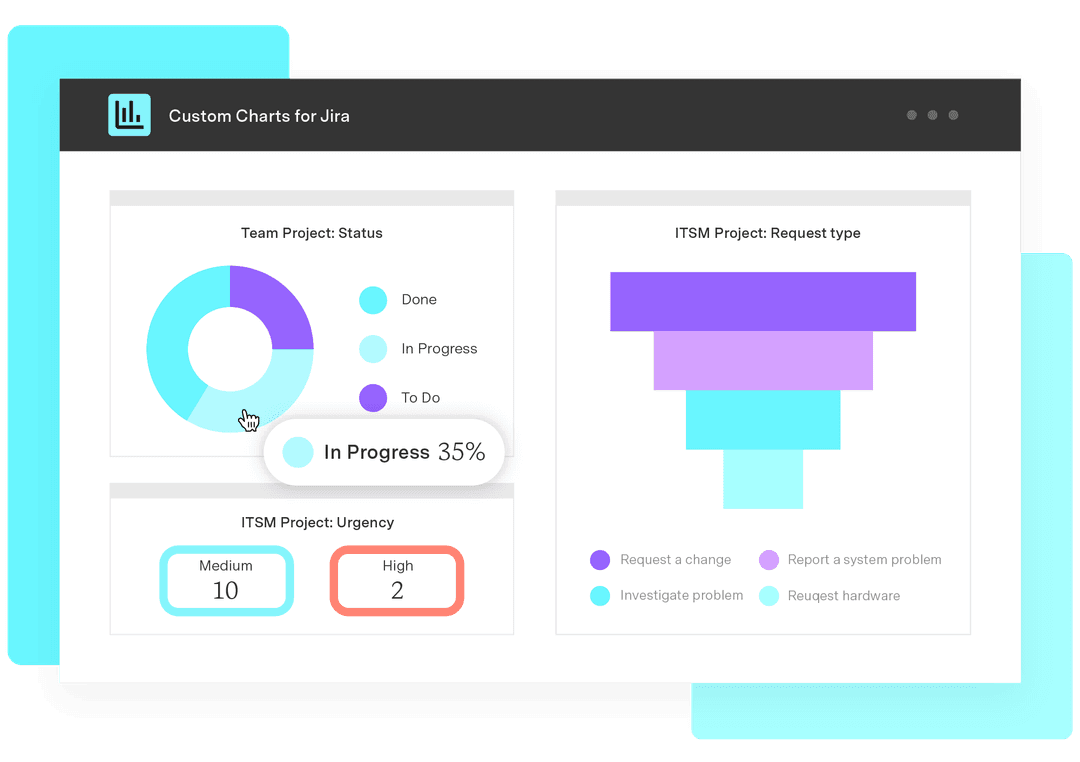App comparison: Rich Filters vs. Custom Charts for Jira and Confluence
Tempo Team
Atlassian’s Jira is lauded as a best-in-class project management application, and for good reason. The platform allows users to extensively customize and expand its utility with add-ons and third-party apps. The Atlassian Marketplace is home to countless plug-ins that extend user capabilities to meet new organizational demands.
One such application is Qotilabs’ Rich Filters for Jira Dashboard. Dan Mihalache founded Qotilabs in 2015 before selling the company and its headlining software, Jira Rich Filters, to Appfire in 2023. Now, Appfire’s Rich Filters for Jira allows users to customize an interactive Jira dashboard using Jira Query Language (JQL), turning it into a dynamic tool that supports in-depth reporting using data generated by the platform.
But how does Rich Filters for Jira stack up against Tempo’s Custom Charts for Jira and Confluence? Let’s find out.
What is the Rich Filters add-on for Jira?
Rich Filters is an application users can integrate into Jira software, allowing them to add gadgets and filters to customize the dashboard. Users can then utilize the expanded real-time data display to track, monitor, and report on project team activities in greater depth.
Using the Rich Filters extension, you can:
Populate your dashboard with multiple quick filters, illustrating data insights using dynamically generated information or static JQL queries, text, dates, and more
Display issue results using multiple views, including computed columns, tags, and colors
Generate advanced issue statistics and charts
Create the same dashboards using Jira Cloud and Confluence
Filters included in Rich Filters
The add-on includes four filters to help you get the desired results:
1. Rich Filter
The Rich Filter is the primary functionality that permits users to sort through project data to identify trends within Jira.
2. Static Filters
Similar to the quick filters found on Jira Boards, Static Filters expand your search capabilities by adding the JQL search operator “AND” to the current query.
3. Dynamic Filters
Dynamic Filters allow you to sort information according to the data fields (or fields) you’re interested in analyzing.
4. Smart Filters
Improve the scannability of results with Smart Filters. For example, you can add a JQL string to the query to add a color code, icon, or label to the results based on its status.
Benefits of Jira Rich Filters
Say goodbye to default Jira reporting functions. The Rich Filters app replaces the original gadgets, including:
Filter Results
Pie Charts
Bar Charts
Counters
Gauges
Timeseries
It also includes options for advanced time-tracking functionality, allowing users to develop a dashboard with robust worklog reporting capabilities. Adding the free Rich Filters: PDF Reports for Jira extension enables users to export their entire dashboard into PDF format for accessible communication and reference.
Rich Filters for Jira is also flexible. With minor, global-level configuration changes, you can display Rich Filters within the Confluence Data Center environment without purchasing another application.
Weaknesses of Rich Filters
Although it is a powerful and productive application, Rich Filters for Jira is not without its drawbacks:
You can display Rich Filters within the Confluence Data Center, but users must purchase a different app to enable custom reporting within the Confluence Cloud platform.
The initial configuration of Rich Filters is a complex, time-consuming process. Users cannot create a custom dashboard from the primary editor. Before adding gadgets, they must set up their display from the global configuration page. This extra layer of complexity makes it hard for new users to get the most out of the application.
Editing the dashboard view also requires knowledge of JQL. Every change, from high-level configuration to gadget integration, requires coding a query from scratch. There is no search bar or basic search dropdown to help you.
Users wishing to report on Jira Service Management metrics, such as service-level agreements (SLA), organizations, or request types, must purchase an additional app from the Atlassian Marketplace.
Users must purchase the Rich Filters: Time Tracking Dashboards add-on if they wish to report on time-tracking data like work logs.
Rich Filters vs. Custom Charts
Although Tempo’s Custom Charts for Jira and Custom Charts for Confluence cover much of the same ground as Rich Filters, some user experience features set the two applications apart.
First, setting up Custom Charts is a breeze. It only takes a few clicks using a simple, user-friendly interface in the main dashboard. Unlike Rich Filters, users don’t have to tinker with JQL or adjust the platform globally, making setup quick and easy, even for non-experts.
Sign up for a demo
RegisterIn addition, users do not need a functional knowledge of JQL to create a customized dashboard. A novice can add a Custom Chart gadget to their interface and create powerful, informative reports using Jira software’s templates within minutes.
Custom Charts is also available as a macro for Confluence Cloud, making it more useful at the organizational level. The application bridges the gap between Confluence and Jira users, allowing managers to build charts on the Confluence page instead of the dashboard. This gives managers who operate from the Confluence platform visibility into Jira-based teams’ activities. Rich Filters users seeking the same functionality must purchase an additional application.
Here’s a side-by-side breakdown of Custom Charts features versus Rich Filters:

Finally, 90% of new features for Custom Charts are based on client requests and feedback, meaning the platform is highly responsive to customer needs.
How Tempo integration can help
Like Appfire’s Rich Filters for Jira, Tempo’s Custom Charts for Jira and Confluence lets Jira users create custom dashboards that drill down into their data to uncover issue trends and insights. Rich Filters is suited to clients who appreciate a more hands-on approach to configuration, whereas Custom Charts allows for a straightforward, simple setup.
Even if you prefer Rich Filters, you can still benefit from Tempo’s products. The two applications work hand-in-hand thanks to the integration of Tempo-specific filters. The Tempo Account and Tempo Team dynamic filters add dropdown menus to the Rich Filters interface that list all the accounts the dashboard belongs to. With a single click, the user can select an account or group of accounts to display, replacing dozens of specific dashboards.
Rich Filters and Tempo can both take your favorite productivity tool to the next level. Start your free trial of Custom Charts today to learn how.













































